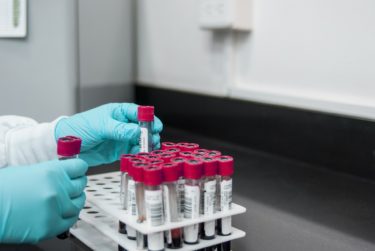When the filmmaker Nanfu Wang moved to the US from China, circa 2012, she was “attracted by the freedom”. She had never seen a protest. On a Christmas visit to her family, she was in Wuhan when the first reports emerged of an unknown virus that caused a pneumonia-like illness. In her new documentary, In the Same Breath, she follows the pandemic’s progress, alternating between China and the US and finds the same problem in both countries: who can you trust to tell you the truth? The Chinese government tried to cover up the pandemic at its first emergence; then-US president Donald Trump airily said it would vanish “like magic” with the warm weather. Both governments made major missteps in managing the pandemic. Viewed that way, Covid-denying protesters no longer seemed quite so crazy.
Much has shifted since. Western medical agencies have come to accept that masks work; the world’s scientists have made safe and effective vaccines; new variants have brought new risks; and each of these has brought new conspiracy theories. Of all of them, the longest-running and the most persistent is rumors about the virus’s origin. Every potential final verdict ratchets up the uncertainty. The latest as I type is the published report of the 90-day investigation US president Joe Biden ordered.
“My friends think I’m crazy,” a friend said last year, before going on to state his belief that the SARS-Cov-2 is a human-created virus, potentially a bioweapon, that escaped from a lab (the “lab leak hypothesis”) rather than, as scientists were insisting, one that hopped from animals to humans (zoonotic transfer). My friend has vast respect for science, so I know that when solid evidence emerges he will accept it. But for more than a year he’s expected that the lab leak hypothesis will eventually be proved correct and his friends will revise their opinion to “prescient”.
Like so many things, this issue has several strands. First: the question of where Covid originated. Second: the life cycle of the lab leak hypothesis-as-conspiracy theory. Third: the question of what we do if evidence emerges that it was a lab leak.
The last of those is above my pay grade.

The second is easier. Time magazine dates the first suggestions of a lab leak to right-wing politicians in January 2020, amplified in February when Chinese researchers issued a pre-print suggesting that “the killer coronavirus probably originated from a laboratory in Wuhan”. Former president Donald Trump was already calling it the “Chinese virus” and dropping dark hints about its origin. A week later, the researchers did the single thing most likely to send conspiracy theories into high gear: they withdrew the paper before it could be peer-reviewed. For more than a year the idea simmered but was repeatedly dismissed.
I can sort of understand the appeal. “Random zoonotic leap that could happen again any time” is terrifying. “These terrible people did this horrible thing” provides the satisfaction of someone to blame and offers the possibility of a prevention strategy.
Mainstream interest in the lab leak hypothesis hit in May 2021, when Nicholas Wade published an essay promoting the lab leak hypothesis, first at Medium and then in Bulletin of the Atomic Scientists. For my friend, Wade’s history as a science writer for the New York Times lends him credibility, despite the taint of Trump’s embrace. Soon afterwards, Times colleague Donald G. McNeil, Jr analysed Wade’s piece and noted how much new information had emerged since his own article on the topic was killed a year earlier because scientists were dismissing the possibility of a lab leak. “We still do not know the source,” he wrote, concluding that the evidence continues to shift towards a lab leak.
Wade’s piece is certainly not Meme Zero – my friend was not the only one who “has a hunch”, and anyway journalists report trends rather than create them – but it provided the weight and amplification necessary to cue the rest of the media. A search turns up soon-afterwards pieces at CNN, the Washington Post, the LA Times, Bloomberg, Vanity Fair, radio station WNYC, Foreign Policy, and MIT Technology Review. Rupert Murdoch’s Wall Street Journal particularly embraced it, running two news stories and two op-eds in just a couple of weeks. The subject has remained on the radar ever since: despite the lack of new facts, the Guardian, the Washington Post, and The Week all covered it as a controversy in the first couple of weeks of August.
In Congressional hearings, Antony Fauci has had to (im)patiently correct numerous accusations (many from Kentucky Congressman Rand Paul) that the NIH was funding “gain of function” research at the Wuhan lab, and the implication that such research was designed to develop bioweapons.
Yesterday, Biden’s commission released its report: unanimous agreement among the eight agencies involved in the investigation that the virus was not bioengineered (whew!). But: there was less consensus about the virus’s origin. Five agencies “assess with low confidence” that the virus transferred to humans from an infected animal. One is confident that it was a lab leak. The other three couldn’t reach a conclusion. More information is needed!
The calls for further investigation continue to come from all parts of the house. Getting this right – or admitting that we can’t be sure – really *matters*. Our preparation for future pandemics requires an accurate understanding of what happened.



